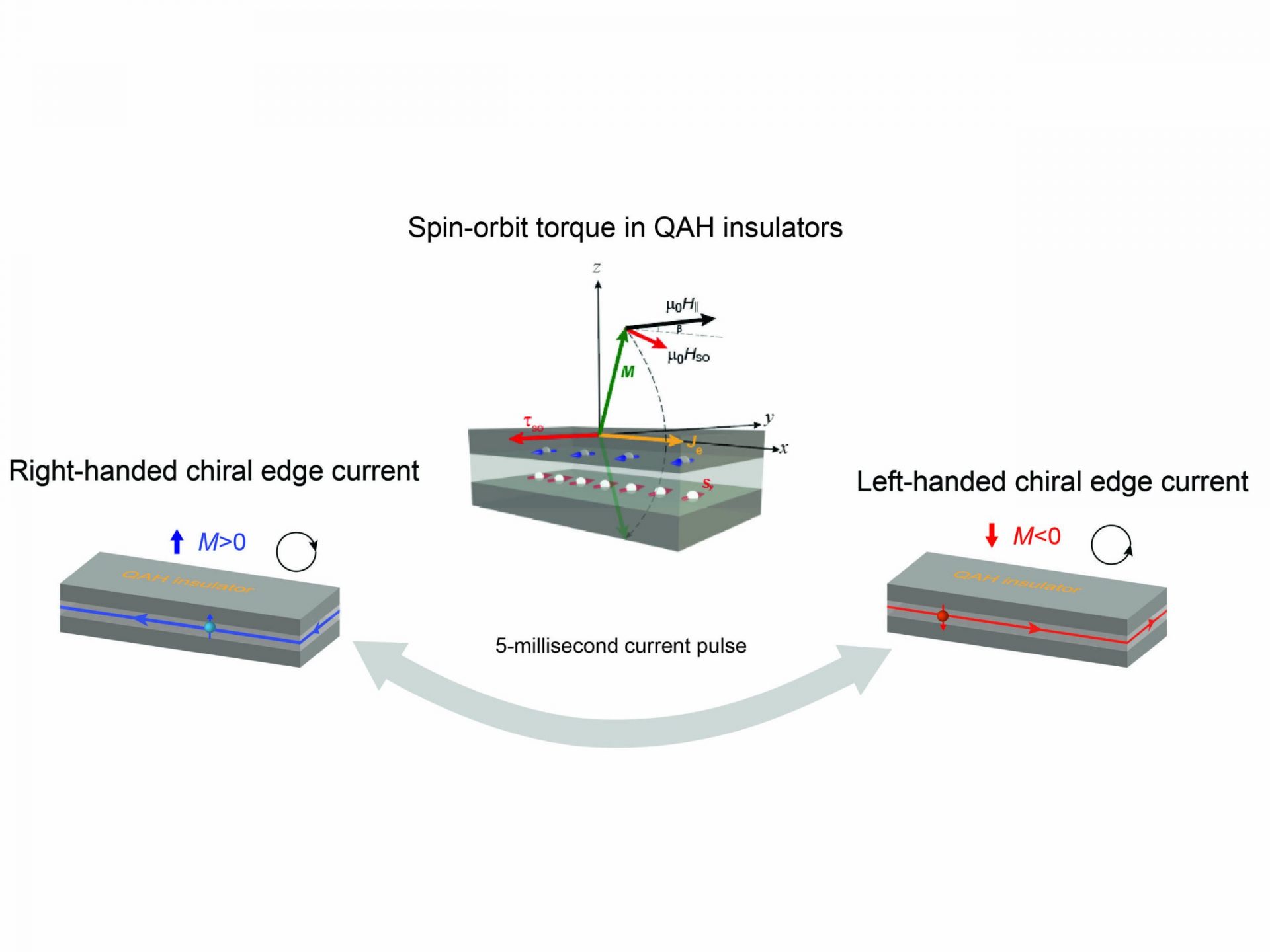A groundbreaking new electrical method has been developed by a team of researchers from Penn State, with implications for the future of electronic devices and quantum computers. The method allows for the convenient change in the direction of electron flow in certain quantum materials. These materials exhibit the quantum anomalous Hall (QAH) effect, where electrons flowing along the edge of a material do not lose energy. The team’s work was described in a paper published in the journal Nature Materials.
According to Cui-Zu Chang, one of the researchers involved in the study, as electronic devices become smaller and computational demands increase, it is crucial to find ways to improve the efficiency of information transfer, including the control of electron flow. The QAH effect is particularly promising because it allows for the flow of electrons along the edges of materials without any energy loss. This effect is referred to as dissipationless, meaning no energy is lost as heat.
QAH insulators, which are materials exhibiting the QAH effect, are a type of topological insulator. These insulators are thin layers of film, only a few dozen atoms thick, that have been made magnetic so that they only conduct current on their edges. The electrons in these materials travel cleanly in one direction, creating a dissipationless effect. In this study, the researchers developed a new electrical method to control the transport direction of the electron flow and enable the electrons to make an immediate U-turn.
To achieve this, the researchers fabricated a QAH insulator with specific, optimized properties. They discovered that applying a five-millisecond current pulse to the QAH insulator affected the internal magnetism of the material, causing the electrons to change directions. This ability to change direction is crucial for optimizing information transfer, storage, and retrieval in quantum technologies.
Unlike current electronics, where data is stored in a binary state as on or off, quantum data can be stored simultaneously in a range of possible states. Changing the flow of electrons is a significant step in writing and reading these quantum states. The previous method of switching the direction of electron flow relied on an external magnet to alter the material’s magnetism, which is not ideal for small devices like smartphones. In this study, the researchers found a convenient electronic method to change the direction of electron flow.
The researchers have also provided a theoretical interpretation of their methodology and are currently exploring how to pause electrons on their route, essentially turning the system on and off. They are also working towards demonstrating the QAH effect at higher temperatures, as the current requirements for quantum computers and superconductors involve very low temperatures near absolute zero. The long-term goal is to replicate the QAH effect at more technologically relevant temperatures.








